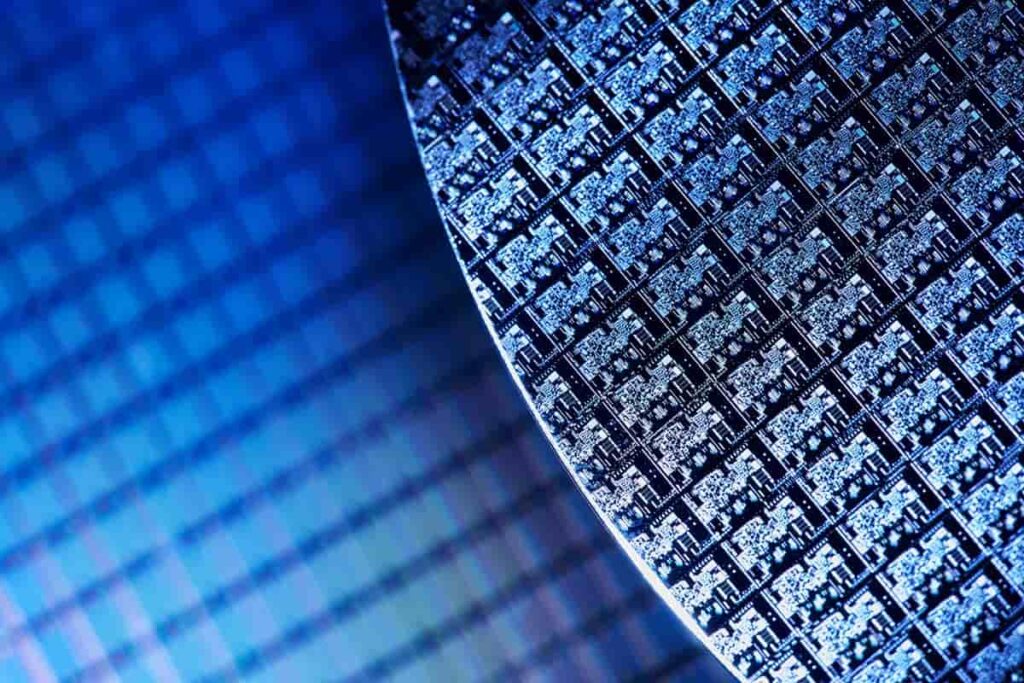Neuromorphic Computing Rethinks AI Chip Design
Table of contents

One of the classic movie scenes of all time is when Gene Wilder’s reluctant mad scientist, Dr. Frederick Frankenstein (Franken-STEEN!), realizes his incompetent henchman Igor got his hands on an abnormal brain (or, as the hunchback believed, it belonged to someone named Abby Normal). Hilarity ensued. However, that cinematic moment also reminds us that if you use subpar hardware, the results will be less than expected. The emergence of artificial technology as a disruptive technology in everything from healthcare to fintech has largely been a revolution in software and big data, such as developing algorithms that can recognize faces or analyze medical images. Hardware has largely been an afterthought. Even Nvidia’s (NVDA) powerful parallel Graphical Processing Units (GPUs) for deep learning and other AI applications were originally designed for other purposes such as gaming. While a number of companies are now developing hardware specifically for AI, some believe neuromorphic computing is the future.
What is Neuromorphic Computing?
To understand the basics of neuromorphic computing – not an easy task – it’s worthwhile to discuss a few essentials about computer hardware without getting too bogged down in terminology about transistors or Tensor Processing Units (TPUs).
Let’s start with Moore’s Law, a concept introduced in the 1960s by Intel (INTC) co-founder Gordon Moore that says computers will get faster and better about every two years, with a corresponding drop in price for the technology. The principle is based on the Central Processing Unit (CPU), which has served as the brain of most computers since Intel introduced the single-core CPU in the 1970s. Moore’s Law has mostly worked as advertised, but the end is nigh, as many experts predict that it won’t be possible for much longer to cram enough electrical components into a circuit and expect even better performance. That’s led some to bet on moonshot technologies like quantum computers as a way to radically break free of Moore’s Law, though whether the “quantum advantage” will ever arrive remains to be seen.

Meanwhile, many AI chip companies – including a cohort out of China, not to mention Google and its TPU – are doing their own riffs on the GPU in order to build faster and more energy-efficient hardware that improves on the design, which relies on multiple cores for parallel computations, as opposed to the handful of processing cores used by CPU systems. Part of the motivation is the trend toward mobile and edge computing, where the emphasis is on giving devices enough “intelligence” to work with minimal need to tap into computing power supplied remotely through the cloud (though superfast 5G could theoretically assuage concerns over latency).
One emerging technology that could tick many boxes for better AI hardware – low latency, low power – is neuromorphic computing. Caltech scientist Carver Mead coined the term back in the 1980s to describe a sort of hybrid analog and digital circuit. Neuromorphic computing or engineering is a type of biomimicry that attempts to build a computer system that mimics the biological structure of the human nervous system. More specifically, “neuromorphic chips attempt to model in silicon the massively parallel way the brain processes information as billions of neurons and trillions of synapses respond to sensory inputs such as visual and auditory stimuli.” That quote comes from an article in MIT Technology Review on Qualcomm’s (QCOM) efforts to develop the technology back in 2014.
Spiking Neural Network
Much of the work around neuromorphic computing involves what’s called a Spiking Neural Network (SNN), which is modeled on how neurons interact with synapses, which send signals between brain cells chemically or electrically. ZDNet did a great deep dive into neuromorphic computing and sums up the SNN pretty well:
In the biological brain, each neuron is connected to a variety of inputs. Some inputs produce excitation in the neuron, while others inhibit it – like the positive and negative weights in an artificial neural net. But with an SNN, upon reaching a certain threshold state described by a variable (or perhaps with a function), the neuron’s state spikes, literally referring to its electrical output. The purpose of an SNN model is to draw inferences from these spikes – to see if an image or a data pattern triggers a memory.
The spiking neurons build connections between each other as they process information, leading to better performance over time. The major takeaway here is that a neuromorphic computer could potentially handle intensive AI applications like facial or pattern recognition with a lot less power and minimal latency because the system would be able to learn without needing to reference a supercomputer-worth of CPUs, GPUs, and memory. In a sense, it would have its own kind of human intuition in a silicon chip.
Who Is Working on Neuromorphic Computing
Intel is one of the companies leading the way in neuromorphic computing with its Loihi processor that features an SNN architecture with more than eight million neurons that can reportedly perform 1,000 times better at certain computing tasks with 10,000 times the energy efficiency over conventional CPU systems. IBM (IBM) is also in the mix among the major tech companies that are working on neuromorphic chip technology, while Qualcomm has apparently backed off from the hardware side of neuromorphic computing. There was some speculation that Graphcore, an AI chip company that is part of the unicorn club of most valuable startups, was designing a neuromorphic chip but it has denied that rumor.
Neuromorphic Computing Startups
However, another AI chip startup that we’ve covered before, Paris-based Prophesee, is working on computer vision technology using neuromorphic computing to help machines mimic the human eye and brain. The bio-inspired tech can process 100,000 video frames per second for applications in robotics, industrial automation, and self-driving cars.

It didn’t take us long to find a couple more startups operating in the space.
Founded in 2012, Aspinity out of the other Virginia has raised $3.5 million in disclosed funding. The startup rolled out its ultra-low power analog processor RAMP, for Reconfigurable Analog Modular Processor, earlier this year. The neuromorphic hardware, which incorporates machine learning, is designed with the Internet of Things in mind, where any opportunity to reduce power demands for always-on sensors is generally a good thing. RAMP can detect and identify voices, alarms or even changes in vibration frequency or magnitude from background noise before the data are digitized. The ability to tackle raw data without digitization reduces the power required by up to 10 times and the volume of data handled by up to 100 times, according to Aspinity.

Applications run the gamut from smart speakers and wearables to smart home security devices and industrial vibration monitoring systems.


That reduces the amount of power, data storage and computing power required to use the sensor, which can be used for applications in IoT, self-driving vehicles and industrial uses such as high-speed production inspection.
Publicly Traded Neuromorphic Computing Company
We even found a pure play in neuromorphic computing during the course of our research.


In 2016, the company acquired a French AI computer vision company called SpikeNet Technologies for about $1.5 million. BrainChip leveraged SpikeNet’s SNN software suite to create BrainChip Studio, which helps law enforcement to rapidly search vast amounts of video footage and identify patterns or faces. The SNN technology makes the software particularly effective at scrolling through low-resolution video to detect and classify faces. The technology is now available to license and hopefully, some deals start getting inked soon because the share price is falling off a cliff while the company bleeds cash every quarter.

Update 10/02/2020 – We did a follow up piece on Brainchip titled “Why BrainChip Stock Should Be Avoided.”
Conclusion
Neuromorphic computing is a rapidly emerging field in artificial intelligence that focuses on the difficult problem of designing hardware that mimics the human brain in order to support the complex computations required to find cute kitten videos on the internet. Seriously, though, it’s interesting to watch the convergence of man and machine, whether it’s in designing brains on silicon or developing computer-brain interfaces, as we barrel toward the great Singularity. Progress is certainly being made on numerous fronts, but our own ignorance about how that grey bowl of jelly in our skulls actually jiggles and jives in the real world means that any effort to copy it digitally will remain a crude approximation for now.
Sign up to our newsletter to get more of our great research delivered straight to your inbox!
Nanalyze Weekly includes useful insights written by our team of underpaid MBAs, research on new disruptive technology stocks flying under the radar, and summaries of our recent research. Always 100% free.














I think it would make a lot of sense for Nvidia to buy Brainchip.
NVIDIA swims in a much bigger pond.
Someone will buy them as soon as they prove next year with early access partners that the Akida Chip is a success. This includes NASA not to mention other companies like Automakers and Magik Eye applications for future holographic 3D virtual imagery.
Speculation about who buys who and $3 bucks won’t get you a cup of coffee at Starbucks these days. We see there’s been a lot of volume driving the price up since summer. Since this is now a $400 million USD company with no revenues, the entire thing hinges on the competency of the people making promises. Given the interest we’ve seen and the fair number of Aussie readers we have, we may look to do an updated piece on this company shortly.
Here’s a piece we did on Brainchip: https://nanalyze.com/2020/09/brainchip-stock-brn-avoided/
The stock should be avoided like the plague.
I am +477% on Brainchip.
That’s great to hear but you only make money when you sell otherwise you simply have paper gains. As we have said numerous times before, we strongly advise all investors to avoid this company like the plague.
https://nanalyze.com/2020/09/brainchip-stock-brn-avoided/